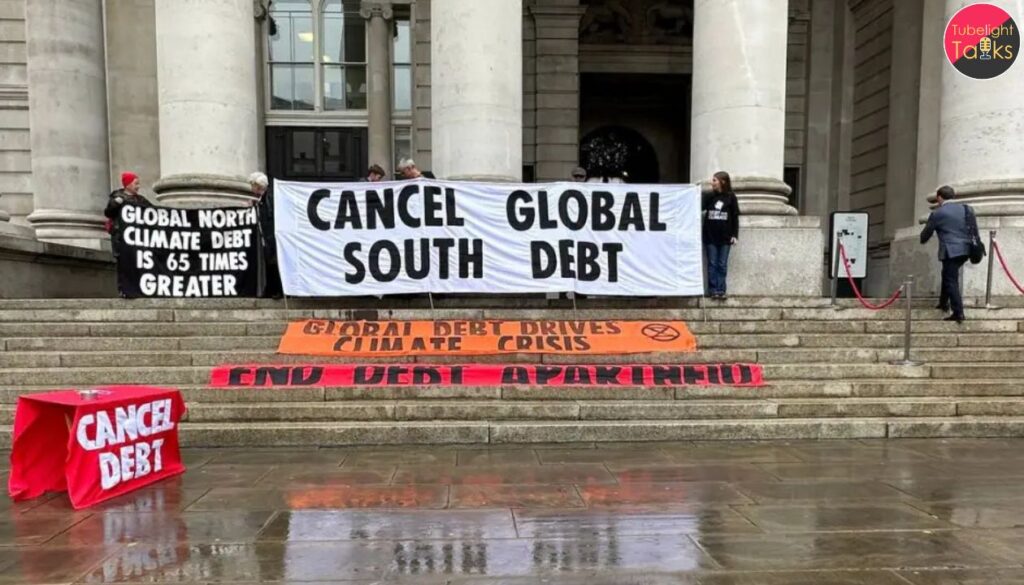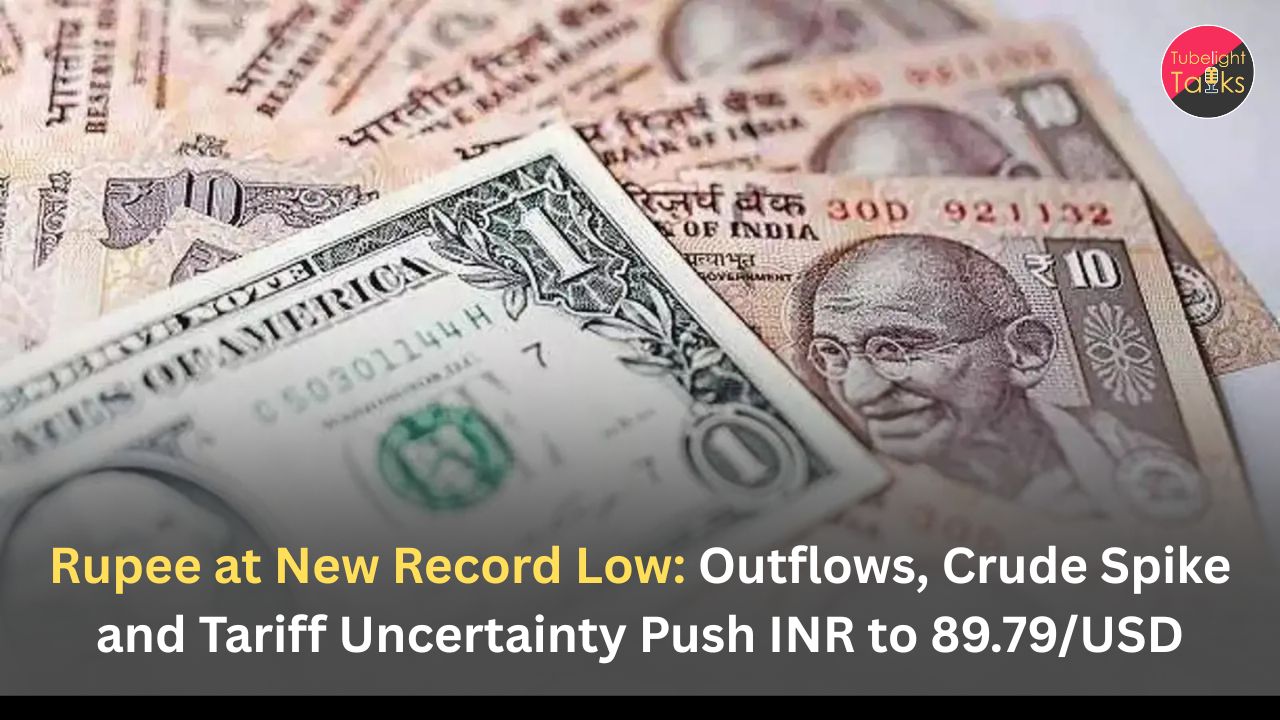The world is facing a debt crisis of extraordinary proportions — and the hardest hit are the nations of the Global South. New data reveals that in some low‑income countries, debt servicing now consumes up to 70% of government revenue, far out‑pacing expenditure on basic services like health and education. The G20 has declared that while systemic collapse may be contained, many developing countries remain trapped in crippling debt burdens with high financing costs and limited growth capacity.
This article explores the roots of the crisis, the responsibilities of western creditor nations, the mechanisms currently in place to deal with debt distress, and why meaningful reform is more urgent than ever.
The Scale and Nature of the Crisis

Data published ahead of the 2025 IMF‑World Bank meetings highlight that global public debt could exceed 100% of global GDP by 2029, putting the world on a precarious fiscal path not seen since the end of World War II. For low‑ and middle‑income countries (LMICs), the picture is even more severe. According to the development finance advocacy group Development Finance International, some nations are spending 45% to 70% of their domestic revenue just servicing debt. These dynamics undermine public investment, erode social services, and restrict nations’ abilities to invest in climate resilience, infrastructure or human capital.
Historical Roots and Structural Imbalances
The debt crisis in the Global South is not new, but it is deepening. Many analysts trace it to patterns established during colonialism and reinforced by post‑colonial lending arrangements. Historically, low‑income states borrowed heavily under conditions that prioritized creditor recovery over domestic development. Structural adjustment programmes of the 1980s and 1990s often forced austerity, reduced public spending and weakened long‑term growth prospects. Today’s crisis is compounded by new pressures: rising global interest rates, strong US dollar valuations, climate shocks, and the lingering impacts of the COVID‑19 pandemic.
Creditor Responsibility: Western Nations in the Spotlight
Creditors—including western governments, multilateral institutions and private bondholders—bear a portion of the responsibility for the crisis. Campaigners argue that western nations must act not only for moral reasons but also for global stability. As the Carnegie Endowment for International Peace notes, debt relief for LMICs can stimulate growth, reduce global assistance burdens and strengthen trade‑relations—which in turn matters to creditor economies themselves. Despite this, reform has been slow. The G20’s Common Framework for Debt Treatments, intended to coordinate restructuring, has faced criticism for delays and limited impact.
Key Mechanisms and Their Limitations
The Common Framework and related processes aim to provide predictable, timely, orderly and coordinated debt treatments. Yet many vulnerable nations remain blocked from full relief.
Some of the major issues:
- Structural adjustment clauses still appear in models, limiting policy space for debtor nations.
- Private creditors often remain outside formal relief processes, complicating restructuring.
- Debtor countries face high borrowing costs and limited access to refinancing, trapping them in repayment loops.
Impact on Development, Climate and Governance
The debt burden directly affects human development. When countries spend most revenue servicing debt, investment in healthcare, education and climate adaptation suffers. In addition, high debt limits options for responding to climate disasters, which disproportionately hit Global South nations. Some analyses view the debt crisis as intertwined with the climate crisis itself. Governance also suffers. Debt distress often leads to policy conditionality and weakened sovereignty, undermining trust and efficacy in public institutions.
Read Also: IMF Upgrades India Growth 2025-26 Outlook Amid Global Economic Challenges
Moral Lens on Global Debt
Beyond economics lies a deeper moral responsibility. According to the wisdom of Sant Rampal Ji Maharaj, true progress is measured not merely by GDP growth, but by the welfare, dignity and freedom of all individuals. When nations borrow to simply service creditors at the cost of education, health and human dignity, they stray from a path of justice and truth. The debt chains that bind the Global South to cycles of dependency reflect not only economic structures but moral ones. In this light, the call for debt reform becomes not just technical—it becomes a call to live according to satkarm: righteous action that uplifts society, restores fairness and honours the innate value of every human being.
A Call to Action for Creditor and Debtor Nations
For the world to avert a deeper debt‑driven crisis, coordinated action is needed:
- Creditor nations must lead by offering genuine relief—cancellations, more generous restructuring and removal of punitive clauses.
- Global governance must be reformed to give debtor nations greater voice in processes and ensure fairness and transparency.
- Debtor countries should prioritise growth‑oriented investment (in human capital, infrastructure) over mere repayment, supported by international partnerships.
Final Reflection: Reform Is Urgent
The debt burden in the Global South is not just a statistical point—it is a silent crisis impacting hundreds of millions of people. The world’s economic architecture must adapt. If it fails to do so, the result will be not just slower growth but stunted development, higher inequality and deeper instability. The time to act is now: for creditor nations, for global governance, and for every nation that believes in dignity, justice and equitable development.
FAQs: Rising Debt Crisis in the Global South
Q1: What percentage of revenues do some Global South countries spend on debt servicing?
In some low‑income nations, up to 70% of government revenue goes toward servicing debt.
Q2: Will eliminating debt fix the crisis on its own?
No – while relief helps, structural reforms to governance, financial systems, human capital and investment are also essential.
Q3: What is the G20’s role in addressing this crisis?
The G20 has pledged to strengthen the Common Framework and improve debt treatment predictability, transparency and coordination.
Q4: How is the climate crisis connected to debt?
High debt burdens limit countries’ ability to respond to climate shocks, and some analysts see debt dependency as part of a broader systemic imbalance rooted in global economic history.
Q5: Why should creditor nations care?
Debt crises undermine global stability, reduce demand for exports, raise migration and security risks, and ultimately can cost creditor nations through assistance burdens and lost markets.










